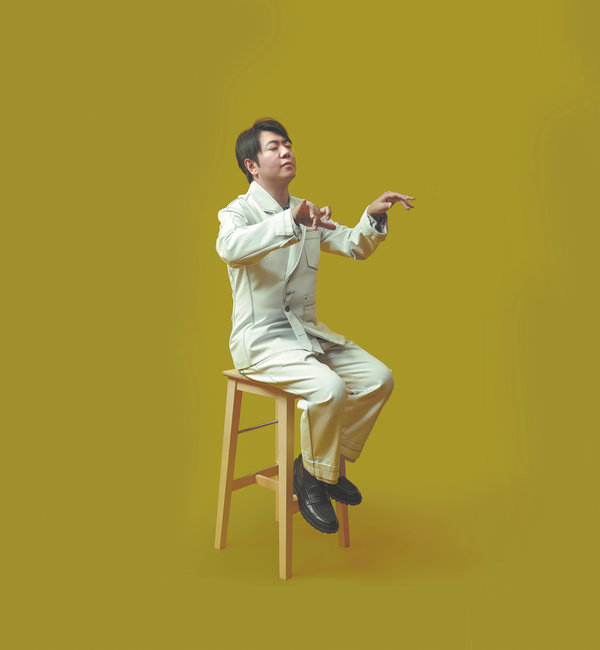
Much like a trip to the zoo, French composer Camille Saint-Saens' The Carnival of the Animals has enchanted generations of young listeners and introduced millions to classical music.
Written in 1886, it is one of the composer's most popular pieces. However, he was worried that it would harm his reputation as a serious musician, and insisted on performing the piece in private, only allowing the iconic movement, The Swan, to be published during his lifetime.
The Carnival of the Animals consists of 14 movements, and was finally published in 1922, a year after the composer's death.
When pianist Lang Lang was preparing to release a new album, he wanted to record every movement of the whimsical work, which he says has captivated him ever since he was a child.
His desire to do so was questioned by his colleagues, who, like many people, consider The Carnival of the Animals as "not being serious and only for entertaining kids".
"My wish to record The Carnival of the Animals was not fulfilled for many years. However, it's a masterpiece to me, rivaling the great pieces like those of Rachmaninoff or Tchaikovsky. It is more than its humor and fun," says Lang.

On March 1, his latest album, Lang Lang — Saint-Saens, was released by Deutsche Grammophon.
Joining forces with his wife, pianist Gina Alice Redlinger, the Gewandhausorchester — a symphony orchestra founded in 1743 and based in Leipzig, Germany — and Grammy Award-winning conductor Andris Nelsons, Lang recorded The Carnival of the Animals.
"By recording The Carnival of the Animals, like other music which is seen as 'simple', I saw what I could rediscover. I know its movements by heart, from The Lion's Royal March and Hens and Roosters, to The Elephant and The Swan. I really had to use my imagination," he says.
Lang adds that the recording also reminded him of his 2019 album, Piano Book, on which he plays pieces such as Beethoven's Fur Elise and Debussy's Clair de Lune, which accompanied him in the first few years of his lifelong love affair with his instrument.
"It's all about the joy that music brings to me. I feel like I know the pieces better now I am much older and experienced as a pianist," he says. "I hope that The Carnival of the Animals, just like the compositions I recorded for Piano Book, will make more children fall in love with music."
Lang says his 2-year-old son, who has just started to learn to play the piano, loves The Elephant, which is written for the bass and the piano, the most.
"He enjoys the way the sounds portray the heavy animal. I also realized that he is drawn to the deep sounds," says Lang. "I won't push him to learn to play the piano. If he loves another instrument, such as cello, I will be happy too."
For his new album, Lang also recorded Saint-Saens' Concerto for Piano and Orchestra No 2 in G Minor, Op 22, which he describes as "a magnificent but underrated romantic masterpiece".
"I was first drawn to it during my student days. I always liked it. The opening is a tribute to Bach, and the first movement has slow cadenzas, as well as regular fast passages. The second movement is a scherzo, almost like Mendelssohn's A Midsummer Night's Dream, and the finale is virtuosic, like Bach and Liszt combined. It's almost an organ concerto, but it also has these delicate French elements," he says.
Unlike playing Rachmaninoff or Tchaikovsky, he says that playing French music is quite different, and requires him to capture "a sense of subtle harmony".
He thanks his wife for giving the performances a female touch, which fits the atmosphere of French music.
"It's perfume. In interpreting French music, I let myself imagine that I'm expressing emotions captured in a bottle, which is very poetic," says Lang.
The recording of Concerto for Piano and Orchestra No 2 in G Minor, Op 22 also celebrates the historic association between the Gewandhausorchester and the music of Saint-Saens.
In May 1868, the composer premiered the piece in Paris and the following October, he gave its second performance with the Gewandhausorchester in Leipzig.
"The orchestra has a special connection and approach to Saint-Saens' musical language. Working with Lang Lang is also deeply enriching," says conductor Nelsons.
Lang was also keen to include some well-known and smaller-scale solo or four-hand piano works on the new album, starting with Ravel's Pavane pour une infante defunte (Pavane for a Dead Princess). He also plays the Toccata from Saint-Saens' Six Etudes, Op 111 and the Pavane by Faure, as well as the Flower Duet from Delibes' opera Lakme.
For Debussy's Petite Suite he is again joined by his wife, who describes playing this evocative piece as being like "painting a picture".
Also included on the new album are a dozen works for solo or four-hand piano — a blend of pieces, which Lang describes as "neglected gems by five female French composers".
"In addition to iconic music by Saint-Saens, Ravel, Debussy and Faure, I was able, for the first time, to get better acquainted with music by female French composers," says Lang. "For this recording I have unearthed some beautiful treasures, which I am thrilled to share."
He is performing Saint-Saens' Concerto for Piano and Orchestra No 2 in G Minor, Op 22 throughout the 2023-24 season, which will include a German tour this month.